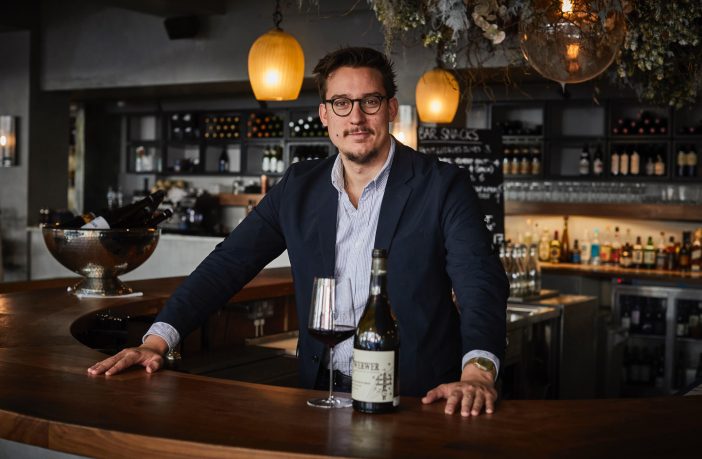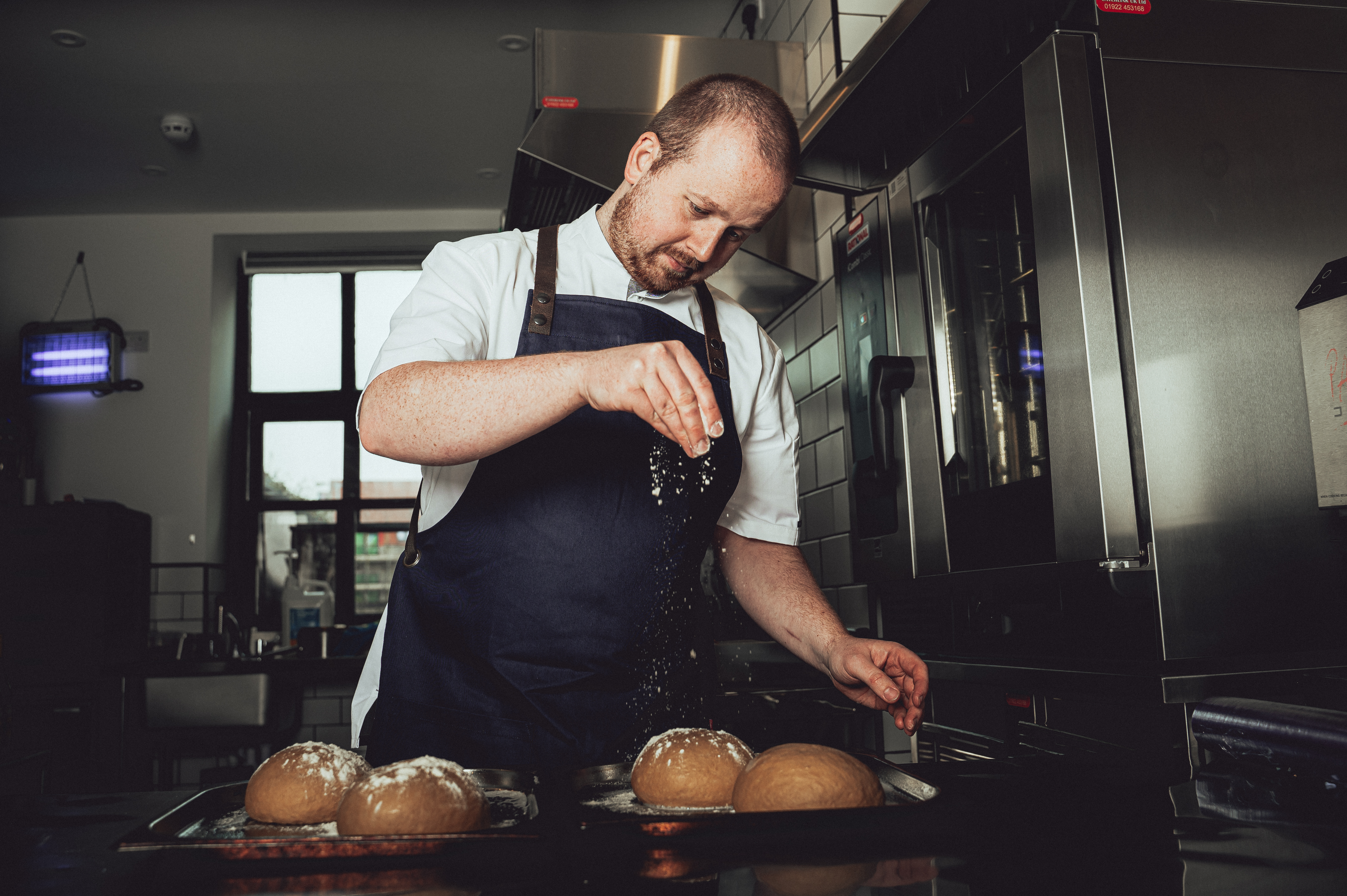Make the holiday season extra special with drinks that perfectly match your festive fare. Katy Edgington gets advice from wine expert Bert Blaize
It’s the most wonderful time of the year and you’ve put enormous effort into stocking the fridge, freezer and cupboards with the festive fare to match. But when it comes to choosing what drinks to pair with each occasion, many of us have only the vaguest idea. We end up reaching for a familiar name or a bottle we’ve enjoyed before.
Born and raised in Staffordshire, Bert Blaize is a sommelier, wine writer and consultant who learned the ropes at La Belle Epoque in Manchester and Raymond Blanc’s Le Manoir aux Quat’Saisons, before taking the reins at The Clove Club in Shoreditch – the UK’s top-ranked restaurant in ‘World’s Best 50 Restaurants’ for two years running.
In 2018, Bert was named the UK’s Top Young Sommelier by Flint Wines. He now takes care of the wine at Serge et le Phoque in Fitzrovia and opened his first shop in London in 2020. It’s safe to say he knows a thing or two about pairing wine and food
Bert’s book Which Wine When, co-authored with his friend Claire Strickett and published in 2019, has lots of easy-to-follow advice on choosing wines to serve alongside all of your festive fare in a chapter dedicated to ‘going the extra mile’. With roast turkey, they recommend a zesty, fresh white like an Albariño or a textured white like a Chardonnay or Chenin Blanc. If you’re going for rich, dark duck or goose, try a fruity, spicy red like a Northern Rhône Syrah or Austrian Blaufränkisch. A vegetarian main like whole roast celeriac is complemented to perfection by an aromatic white Rhône blend.
There’s another whole chapter on wines to pair with cheese – ideal if you’re taking on board our pointers from the November issue on building the perfect cheese board. Bert and Claire suggest Pecorino to go with Pecorino, for example, and a Chilean Cabernet Sauvignon with your matured cheddar. But how about a more local recommendation?
“Most cheeses pair well with sweet wines, but it’s hard to make sweet wines in this country – never mind Staffordshire – because of the cooler climate. What does go well together is a Camembert style soft cheese with sparkling wine. That’s because of the toasty, brioche notes in the wine and the acidity that cuts through the creamy richness of the cheese – like a slice of zingy green apple. Halfpenny Green’s English sparkling wine works really well.”
When it comes to sparkling wines, Champagne in particular, Bert believes It’s important to support smaller growers rather than the big names. One of the biggest companies in the world, LVMH, owns Moët & Chandon, Dom Pérignon, Veuve Clicquot and Krug.
“They’ve very cleverly turned Champagne into a luxury commodity rather than a wine style, which I don’t think is right because I think Champagne should be for everyone,” he argues.
“We call them ‘growers’ because they used to supply all the grapes for the big houses, but those houses have priced the growers out of making their own wine. Now there are a lot of these small wineries in Champagne. You’ve got to have Champagne at Christmas really, but supporting these smaller names is a great way to go. Otherwise, I love Cava at Christmas. It’s getting better and better and you don’t have to spend that much to get a great example. It’s a nice refresh for your palate, too.”
What about that other most familiar of Christmas tipples: mulled wine?
“I think making mulled cider is much more interesting,” says Bert. “You can get really good organic cider from Dunkertons. It’s lower ABV than a mulled wine, obviously, and the traditional spices like cinnamon and nutmeg go well with baked apple flavours. It works much better than mulled wine, it’s cheaper, and also it’s a waste of good wine, I think – drink the wine instead!”
When it comes to relaxing by the fire of an evening after all the presents are wrapped, Bert reckons you can’t go far wrong with sherry as a nightcap – and don’t forget to leave one for Santa too.
“It’s really good value for money and there are so many different styles to explore. It tends to work with quite rich foods, because it’s quite nutty and rich. You can get Pedro Ximenez, which is like liquid Christmas pudding, or there’s Manzanilla sherry which is dry and Amontillado with a bit more richness.”
Bert’s Fig Leaf Negroni
Wondering what to serve visitors alongside a mince pie? Look no further than Bert’s fig leaf negroni. Infuse your gin now ready for the holidays.
Take a bottle of gin, put it in a sealable jar and add some fig leaves. If you can’t find fig leaves, blackcurrant or bramble leaves also work well. In two weeks to a month you’ll have a really nice infused gin.
Combine 1 part gin with 1 part sweet vermouth and 1 part Campari, stir over ice and serve with a wedge of orange. Or combine equal measures into a bottle and simply pour over ice when your guests arrive.
When you’re buying wine it pays to visit a smaller, independent wine shop rather than the supermarket. When you buy a £5 supermarket wine, it works out around 30p on average for the grape juice itself. The vast majority of your pound is going towards taxes, duties, marketing and the supermarket itself.
“You’re getting ripped off!” Bert warns. “There’s a lovely wine shop in Eccleshall called Three Pillars. Go into places like that and chat to knowledgeable people – there are lots of them out there and that’s the best way to get the inside information. Ask them what’s good value for money. They’re doing it because they love wine, not to become millionaires.”
Your local wine shop will also be able to advise if you’re choosing wine to gift to a friend or loved one. One of the best ways to build your own knowledge is to go to a wine tasting, learn and explore different styles. There are plenty of independent wine shops that have popped up during lockdown, including Bert’s own.
Situated between East Finchley and Highgate in a classic car showroom, Bottles ‘n’ Jars is a luxury food and wine store selling a range of wines, craft beers, tinned goods, breads, oils and more. They deliver nationwide and offer wines starting from £9 per bottle.
“We wanted it to be affordable. So you can come in and get some nice pasta handmade in the UK with UK grains, a nice sauce and a bottle of wine and have dinner on the table for £15.”
If you’re lucky enough to receive a carefully chosen bottle or two for Christmas, proper storage is key to keeping your wine in fine condition for when you’re ready to crack it open. Still, cool and dark is the mantra to remember, says Bert.
“The back of a cupboard is ideal, but the kitchen is the worst place because the fluctuations in temperature can ruin wine in a couple of months. Of course a cellar is ideal. The temperature should be between 12-16 degrees Celsius. I keep my wine in a bonded account, where you pay per bottle per year and they keep it in storage for you. That means it’s out of sight and I can’t drink it!”
In recent months, Bert has worked with chef Tom Shepherd on the wine list for his new Lichfield restaurant, Upstairs, and is hosting what is planned as a series of seasonal events with The Table Market at Sandon Hall. So, would he ever open up a Bottles ‘n’ Jars branch in Staffordshire?
“My girlfriend wants to move to Norfolk and she’s the boss, so I think I’ll have to open one there instead. But I love Staffordshire still and still follow Port Vale. I am trying to do more events here because it has a special place in my heart.”
Which Wine When is available from all reputable booksellers.




